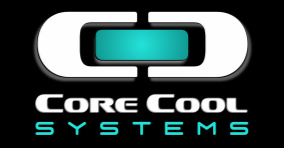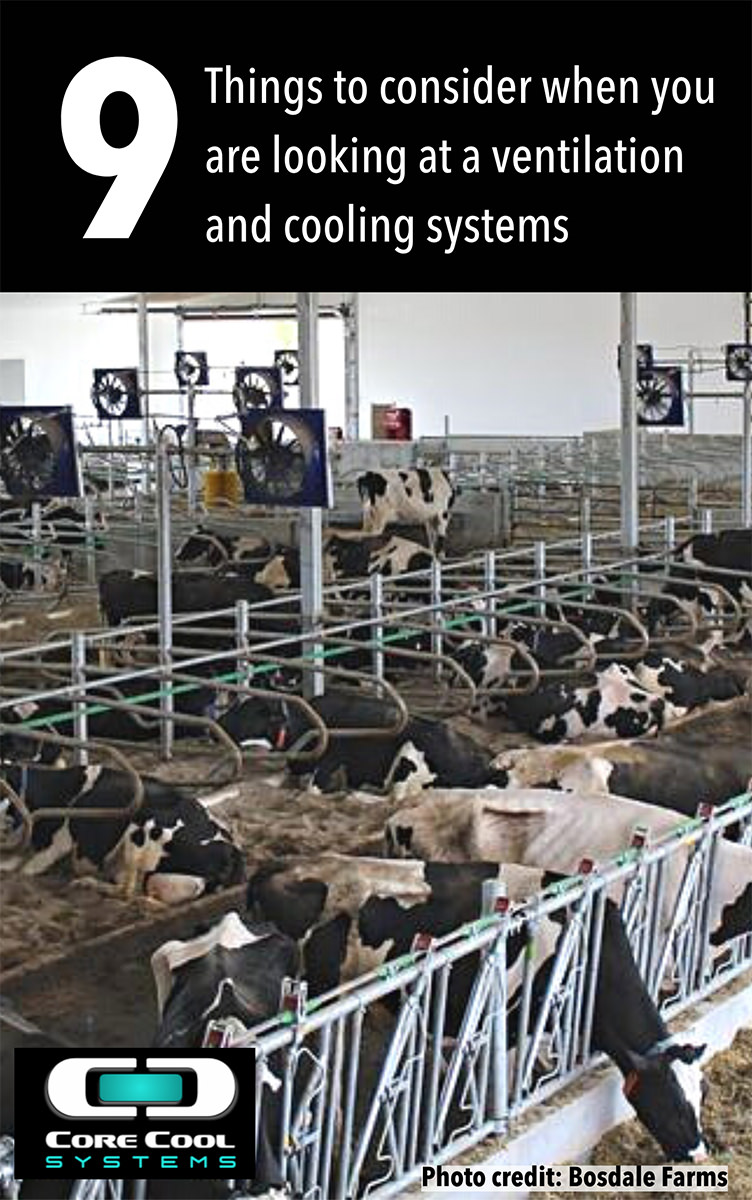
Natural Ventilation Dairy Barns: Why They Can’t Prevent Heat Stress in Modern Dairy Cows — Even in “Cool” Climates
Relying on open-air barns without active cooling could be holding back your herd’s true potential, costing litres, pregnancies, and profit.
The Problem Most Farmers Don’t See Coming: Heat Stress in “Cool” Climates
It’s mid-June. The temperature’s just 21 °C, the breeze is light, and you feel fine in a T-shirt.
But in the barn, your highest-yielding cows are standing instead of lying down, breathing faster, and their feed bunks aren’t as clean as they were yesterday.
You don’t see extreme heat — but they’re already in heat stress.
If you farm in the UK, Chile, Northern Europe, Manitoba, or other “cool” regions, you’ve probably heard this:
“We don’t get the kind of heat they do in Texas or Spain. A natural breeze keeps the barn cool enough.”
It’s a common belief — and it’s costing farms production, fertility, and profit every year.
Here’s the reality: today’s dairy cow isn’t the same as the one from 20 years ago. She’s producing more milk, eating higher-quality feed, and burning higher-energy feed, giving off more internal heat. Even on a mild day, her own body heat — equivalent to a small space heater (1,500 BTU) — can push her into heat stress long before you’d expect it.
Why Modern Dairy Cows Overheat Faster — Even at Mild Temperatures
Genetics and nutrition have driven milk yields up around the world:
- In the U.S., annual milk production per cow more than doubled between 1970 and 2020.
- In Punjab, India, milk output rose 172% between 1990 and 2024, even as cow numbers fell by 31% — because each cow produces more milk, and consequently more internal heat, than before. (Times of India)
Higher milk yield means more heat to shed. Even when it’s only 20–22 °C (68–72 °F), high-yield cows can tip into heat stress from that internal heat alone.
THI and Core Body Temperature: Two Key Numbers for Preventing Heat Stress
THI — the Temperature-Humidity Index — is like a “heat stress score” that combines air temperature and humidity. Think of it as the warning light on a dashboard: once it’s in the yellow, damage has already begun.
- For modern high-yield cows, heat stress can start at THI 68–72 — even though you might still be wearing a sweater or jacket.
- In Galicia, Spain — a relatively cool dairy region — research found milk yield dropped once THI exceeded 72, and milk fat and protein fell at just THI 63–64. Each point above that meant up to 0.249 kg less milk/day per cow. (López et al., 2024, Animals)
CBT — core body temperature — tells you how much heat your cow is actually holding. A cow runs hotter than we do, and she can’t sweat effectively. Like wearing a heated vest when you don’t need it, her internal heat has nowhere to go. Once CBT rises just 0.5 °C, feed intake, milk production, and fertility begin to slide. Without active cooling, cows often fail to recover overnight, allowing the damage to compound day after day.
The Limits of Natural Ventilation in Dairy Barns
Natural ventilation — open sides, ridge vents, or fabric-covered buildings — is better than a closed box. But here’s the catch:
- It only works when the weather cooperates. No wind? No cooling.
- Airflow doesn’t equal cooling. Moving warm air over a hot cow can make her more heat-stressed if the air is hotter than her thermal comfort zone.
- Humidity kills performance. A humid day makes it harder for us to keep cool. It can leave us feeling drained and tired. For a cow, it’s even worse. High humidity reduces her ability to shed heat, making heat stress set in faster.
If the air is hot and humid, your cows are stuck holding heat they can’t shed. A proactive cooling solution needs to include monitoring and adjusting to both temperature and humidity because both impact a cow’s thermal comfort equally.
Why Cooler Climates Still Need Dairy Cow Cooling Systems
- In the UK, summer THI regularly exceeds 68 for multiple days — often with high humidity.
- In Chile’s central dairy regions, late spring and summer days can quietly push cows over the threshold, especially in naturally ventilated barns.
- Across Northern Europe, “mild” 22 °C days with 70% humidity are enough to trigger heat stress in high-producing herds.
These aren’t rare “heat waves.” They’re common seasonal conditions that cost litres, pregnancy rates, and animal health — without a single record-breaking day.
The Hidden Costs of Heat Stress on Milk, Fertility, and Herd Health
Research shows heat stress:
- Cuts daily milk yield — in some cases by 20% or more over a season.
- Lowers milk solids (fat & protein), affecting contract premiums.
- Reduces conception rates and extends calving intervals.
- Increases risk of mastitis, lameness, and culling. (Polsky & von Keyserlingk, 2017, J. Dairy Sci.)
Money matters: A 200-cow herd losing just 1 litre per cow per day over 90 days is 18,000 litres gone. At $0.48/litre, that’s $8,640 missing from your milk cheque — before you count reproduction losses, health costs, and culling.
Natural ventilation alone can’t stop these losses when THI stays above the threshold for hours at a time.
The Smart Approach: Combining Natural Ventilation with Active Cooling
A barn that feels comfortable to you can still be stressful for a cow. She’s bigger, runs hotter, and can’t sweat like we do. By the time you feel hot, she’s been in heat stress for hours.
Natural ventilation is a valuable tool — but it’s not a complete solution for modern dairies.
If air movement alone can’t guarantee cooling, you need a system that takes the guesswork — and the weather — out of the equation.
That’s why Core Cool Systems was engineered specifically to prevent heat stress:
Focused on keeping the cow core cool
- THI sensor tracks temperature and humidity in real time.
- Targeted evaporative cooling delivers relief directly to the cow — not just the barn air.
- Automated response ensures cooling ramps up before performance drops.
- Designed for efficiency — using only the water and energy needed to keep cows in their thermal comfort zone.
Whether you’re milking in a naturally ventilated barn in Scotland, a steel-roof shed in Chile, or a hybrid system in northern Germany, Core Cool makes the environment work for the cow — not the other way around.
The Smart Approach: Combining Natural Ventilation with Active Cooling
A barn that feels comfortable to you can still be stressful for a cow. She’s bigger, runs hotter, and can’t sweat like we do. By the time you feel hot, she’s been in heat stress for hours.
Natural ventilation is a valuable tool — but it’s not a complete solution for modern dairies.
If air movement alone can’t guarantee cooling, you need a system that takes the guesswork — and the weather — out of the equation.
That’s why Core Cool Systems was engineered specifically to prevent heat stress:
- Focused on keeping the cow core cool
- THI sensor tracks temperature and humidity in real time
- Targeted evaporative cooling delivers relief directly to the cow — not just the barn air
- Automated response ensures cooling ramps up before performance drops
- Designed for efficiency — using only the water and energy needed to keep cows in their thermoneutral zone
Whether you’re milking in a naturally ventilated barn in Scotland, a steel-roof shed in Chile, or a hybrid system in northern Germany, Core Cool makes the environment work for the cow — not the other way around.
Keeping Your Cows Core Cool
Don’t leave cooling to chance. The wind is free — but it’s not always there when your cows need it.
Core Cool focuses on keeping your cows’ core body temperature in their thermal comfort zone — because cool cows eat, rest, and produce at their best.
You invest in genetics, quality feed and additives, and the best barn equipment — from cow brushes to robotic feed pushers to precision TMR mixers — all designed to improve comfort, health, and production. But if your cows are too hot, they can’t fully benefit from any of it.
A proactive solution that automatically adjusts fan speed to match barn temperature and fine-tunes evaporative cooling to both temperature and humidity (THI) is an investment where the dollars spent truly make sense — and cents.
Our name says what we do — we are Core Cool, and we keep your cows Core Cool.
Call Nancy today at +1-330-717-8852 or email nancy@corecoolsystems.com. Let’s talk about your facility and how summer is impacting your operation. Whether it’s small changes that make a big difference, or targeted cooling for your holding area or dry cow yard, we’ll create solutions tailored to your needs, your climate, your herd, and your budget.

Share: https://www.corecoolsystems.com/blog/Blog63/Natural-Ventilation-Dairy-Barns-Why-They-Can-t-Prevent-Heat-Stress-in-Modern-Dairy-Cows--Even-in-Cool-Climates
Share Category "Cooling Cows":
https://www.corecoolsystems.com/blog/BlogCategory5/Cooling-Cows

